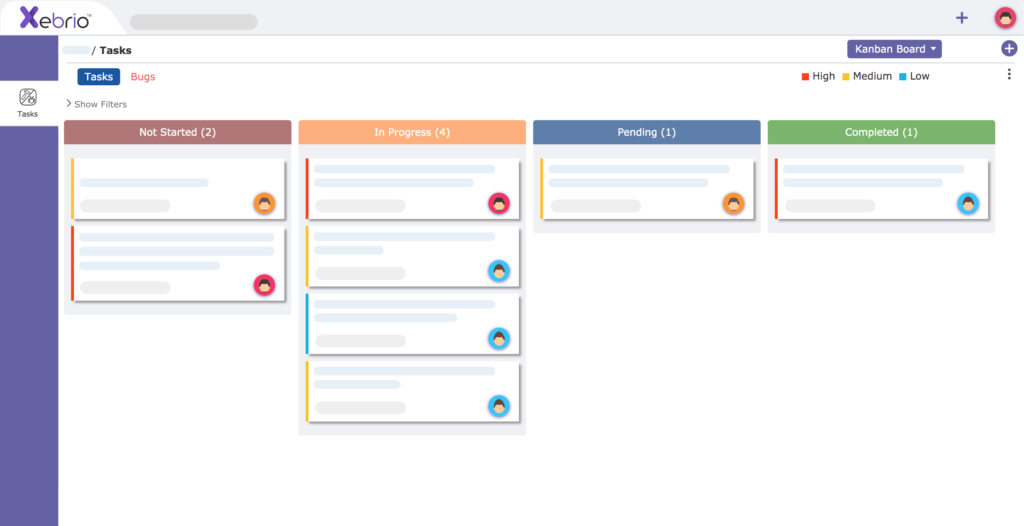Project Management involves a lot of hard work. It is almost like conducting an orchestra where you have to closely monitor all the instrument players and help them out in a jam. Since it involves coordinating and collaborating with various units, challenges and obstacles are bound to crop up every once in a while. However, a little preparation will go a long way in risk aversion and mitigation when disaster strikes (or is looming close).
Hence, here is a comprehensive list of some of the common challenges faced by project managers and how you can deal with them effectively:
Maintaining the Team as a Single Unit
The Problem
As a project manager, you are not managing a single team, rather you are in charge of managing the project and consequently, every other team that will be involved in the project development. However, a team comprises of different individuals. Further, different teams possess different levels of experience and competency. Thus, it can be a challenge to treat the teams as a single unit in order to run it like a well-oiled machine.
The Solution
A good way to introduce uniformity is by making use of a project management software that offers a unified, standard platform for project teams to interact with each other. The?project management tool?can act as a reminder of the common project goal that all teams have to achieve and also provide a platform to work on it. Collaborative work transitions to efficient work. You can break down individual goals and timelines, which will be assigned to each team. As a result, the teams will have absolute clarity on the roles that they need to play, and team members can be notified when a task has been relayed forward to them.
Unrealistic Deadlines
The Problem
Sure, the market has gotten competitive so you may have to resort to overpromising in an attempt to woo your client. However, in doing so, you may be setting up your team for failure.
Dealing with unrealistic expectations and tight deadlines can either impact the project quality or result in delaying the project delivery. Either of the two outcomes will reflect poorly on your company (and of course, on your skills as a project manager). Plus, not to mention that project delays will also incur losses in the form of resources.
The Solution
Begin with attempting an honest and open-ended conversation with your clients so that you can decide on a delivery date that is realizable. While doing so, factor in?unprecedented delays or relevant factors that may push back your deadline. Most importantly, be confident enough to put your foot down if the client’s requirements are beyond feasibility, your team will appreciate it. Once the date has been decided, it is your primary responsibility to break down the project into small goals corresponding to strict (but reasonable) deadlines. Ensure that you have left no stone unturned in the project planning while conducting an alternative analysis. Finally, ensure that you have open channels of effective communication in real-time while the project develops.
Choosing the Right Project Management Software
The Problem
The market is bustling with a number of project requirement management software and tools, which are loaded with a plethora of features. Certain platforms are designed to meet a specific set of goals and objectives, while others can broadly function as a project management software for a diverse range of settings. As a result, deciding on which project management software is right for your team or company can be an overwhelming decision. Choosing an appropriate software or tool is crucial in determining the success of your project.
The Solution
Start by mapping your organizational structure and size. Once that has been established, outline a budget for the project management software.
Some of the essential features of an ideal project management software should include: A simplified platform for planning (along with tools like collaborative calendars, Kanban board, etc.)
- A collaborative environment with relevant tools
- File and data repositories with organizational capacity
- Feedback loops
- Workflow monitoring tools; and
- Delivery channels
- With these functionalities under your belt, you can comfortably manage your project over such a software platform.
P.S. Consider only those tools that offer a long enough free trial. That way, you’ll be able to take a test ride before you have to make a an long term investment decision.
The Highly Dreaded ‘Scope Creep’
The Problem
In project management parlance, scope refers to the definition of the work that needs to carried out within the project. However, your client could add to their project’s requirements during the project lifecycle. For example, the project that had an initial requirement for five essential features now involves 12 features. Scope creep also encompasses the last minute changes suggested by the client, which may result in the reassessment of the entire project.
The Solution
Unfortunately, scope creep is fairly common. Almost every project manager will have a nightmarish recollection of scope creep creeping into their project. However, here are a few effective practices that will help you avoid scope creep (and its resultant effects):?Closely monitor the project’s status and the baseline scope Measure the performance of your team with respect to the baseline scope Identify the key changes, its causes, and the degree of the changes that need to be incorporated
Decide on whether you need to take preventive or corrective action with respect to the changes Map out the changes, plan according to it, and manage the change requests based on the appropriate action Be sure to incorporate a requirements management software; preferably one that lets your clients and stakeholders track how each requirement is progressing towards being a feature, so that there is full requirement traceability and effective change management. Xebrio is one such software that makes sure every requirement and how it is worked on is closely monitored by all stakeholders especially clients, and has their approval at each step.
Issues Arising Out of Miscommunication
The Problem
Miscommunication is one of the commonest obstacles that come in the way of timely delivery of projects. In fact, according to a survey, as many as 57% of projects fail to reach their successful completion due to the breakdown in communication. It not only causes delays and setbacks in the project delivery but also gives rise to conflict amongst the team members.
The Solution
As the project manager, your communication skills are singularly the most effective tool in handling and managing a project. Communication doesn’t simply mean holding a dialogue between the teams but also involves giving explicit instructions, asking questions, and seeking information and also feedback.
It is a good practice to establish communication flows for project members to collaborate. Identify the key factors, based on which the teams have to report to you. A number of project managers rely on project management software to set up such a platform that bears all the communications on a single page.
Risk Mitigation and Management
The Problem
Quite often, a project may not go according to plan. A risk situation may arise due to the uncertainty of the financial market, unknown external environment, or some hidden or underlying flaw in the project designing or planning, which has an impact on the final end product. Hence, a project manager is also required to perform risk mitigation and risk management actions while managing the project. Risk Management involves identifying, assessing, and prioritizing risks. These actions could be are followed by a dedicated, coordinated project and risk management application in order to minimize, control, and monitor the effects better, with data and insights.
The Solution
The ability to predict risk or to respond immediately to an impending risk is an indication of the expertise and top-notch skills of a project manager. However, understandably, even the most seasoned project manager may not be able to predict ALL the possible risks that may crop up during project execution.
In such a case, it is important to carry out strategic planning on the basis of the data collected to factor in all the possible risks that may be involved. In this manner, project managers can project which part of a project is more likely to fail and how it will affect the project. Based on these deductions, they can adopt control and monitoring measures that can effectively handle the risks.
Teamwork Makes the Dream Work
The Problem
Your team members form the rungs to the ladder of your project’s success. Thus, it is important to put together a team that can actually work as a team. The planning for the project starts by ensuring the presence of team members equipped with the necessary skill set to prevent a talent gap. Further, you have to be in charge of managing the different personalities and to prevent the flaring up of any disagreements. These inter-personal clashes can be detrimental to the development of the project.
The Solution
Before picking a team, identify the core strengths of the team and the skills required for the timely delivery of the project. Once you have carried out a SWOT analysis of your team, encourage them to participate in training programs that will enhance their skills. When dealing with establishing a “team spirit” amongst the team members, you can start by introducing team building activities. You can host an ice-breaking session with team building exercises to inspire them. Once the team has developed trust and a feeling of unity, foster these so that you have a positive work environment that is bound to carry your project to success.
In Conclusion
From the challenges outlined above, it can be understood that project management is much more than just creating project timelines and taking an “overview” of what your team does. A project manager is expected to be patient while monitoring and analyzing the setbacks that they may encounter during product development. These experiences act as valuable lessons of what should be done or avoided in future projects. Once you can identify and isolate the common challenges, it is rather easy to derive a logical solution to the problem and facilitate the timely completion of your project.








0 Comments